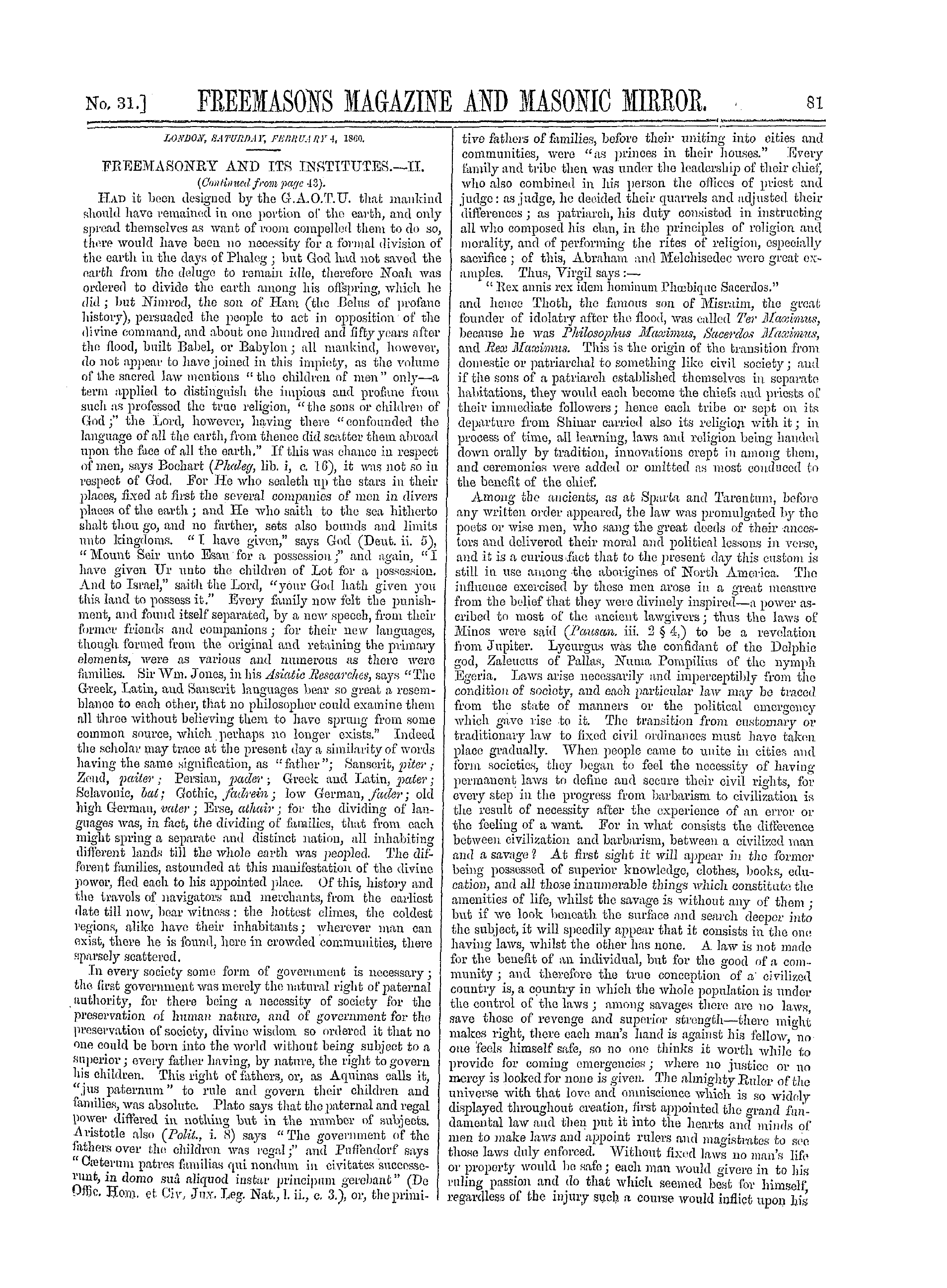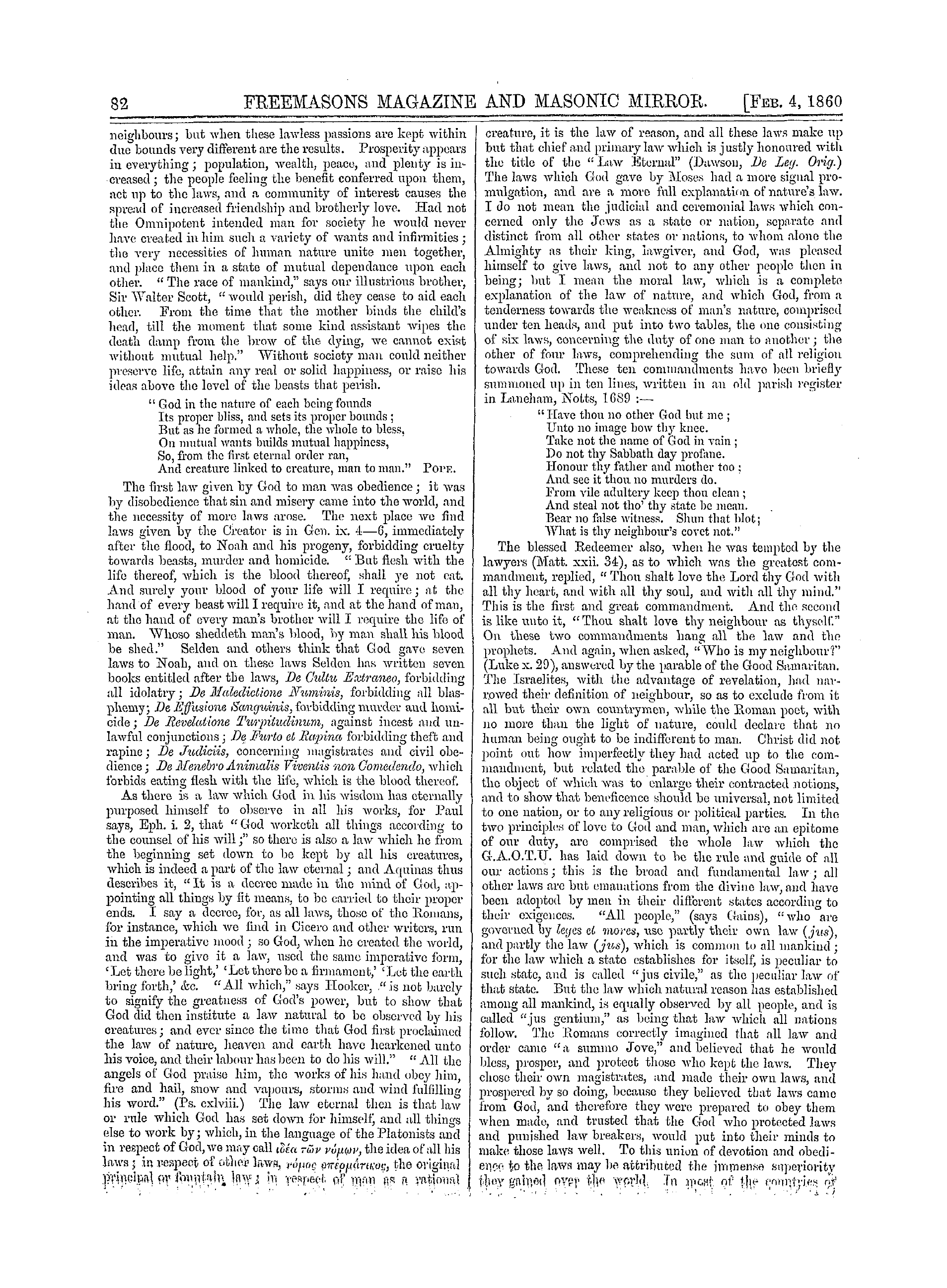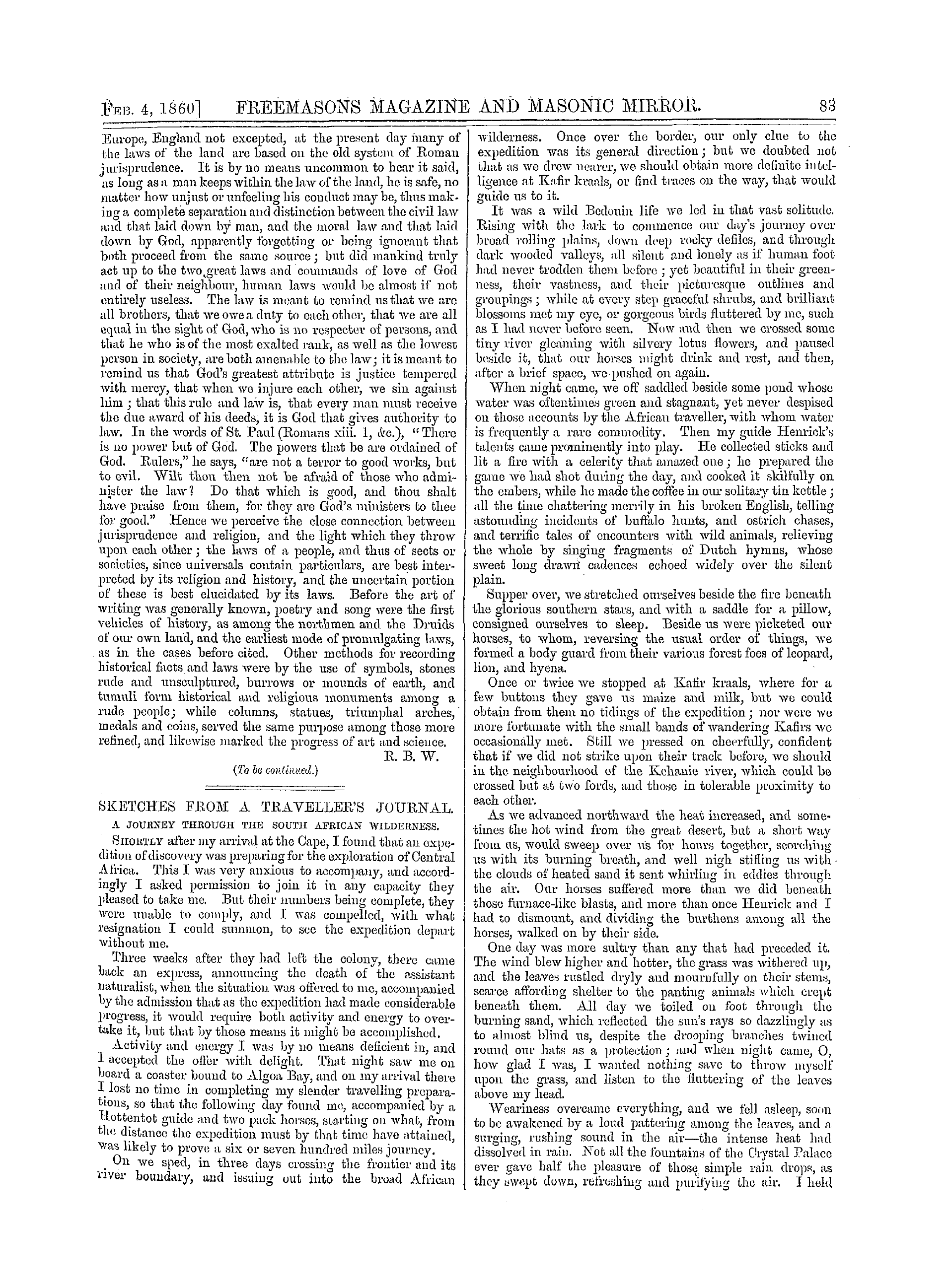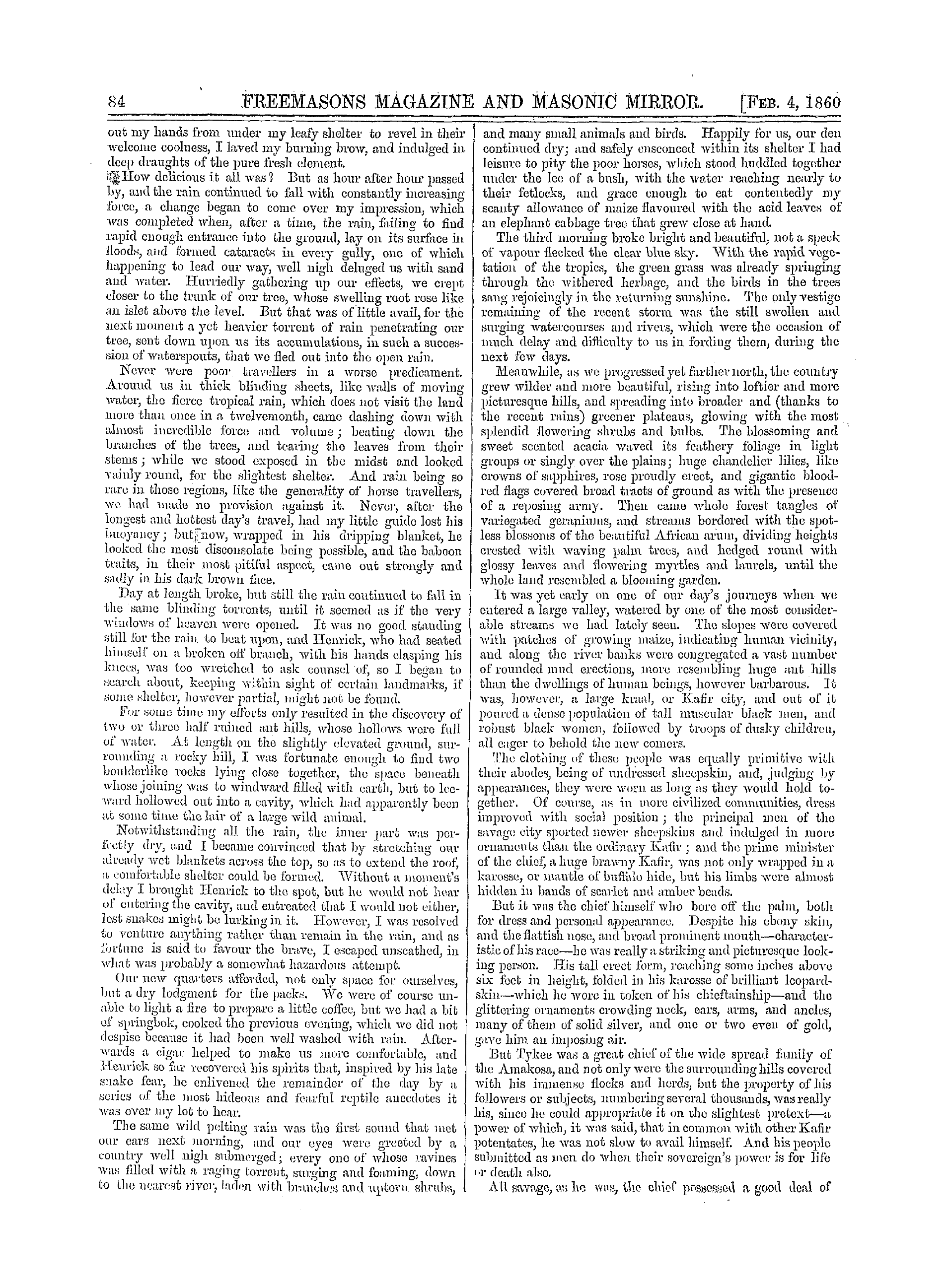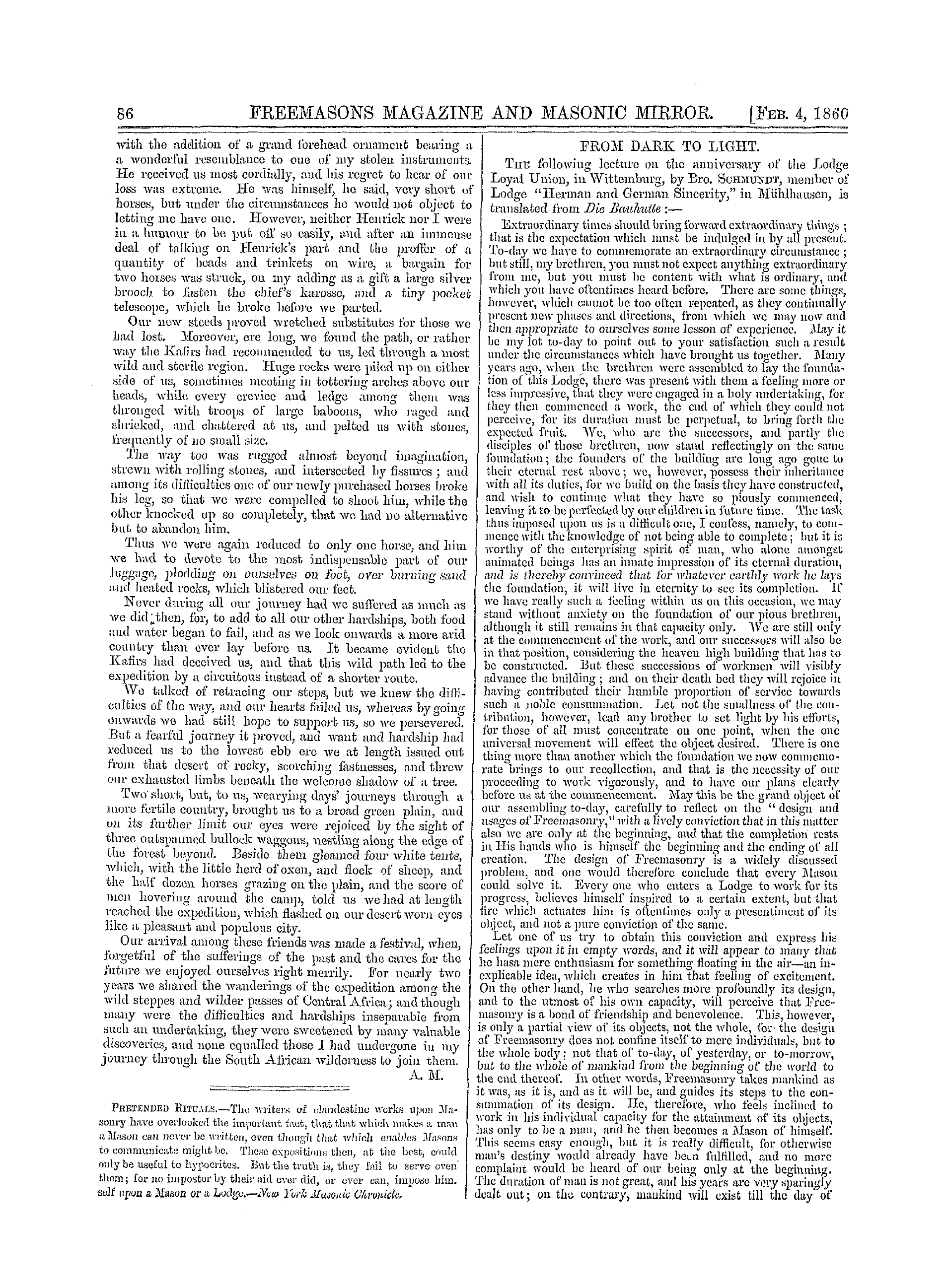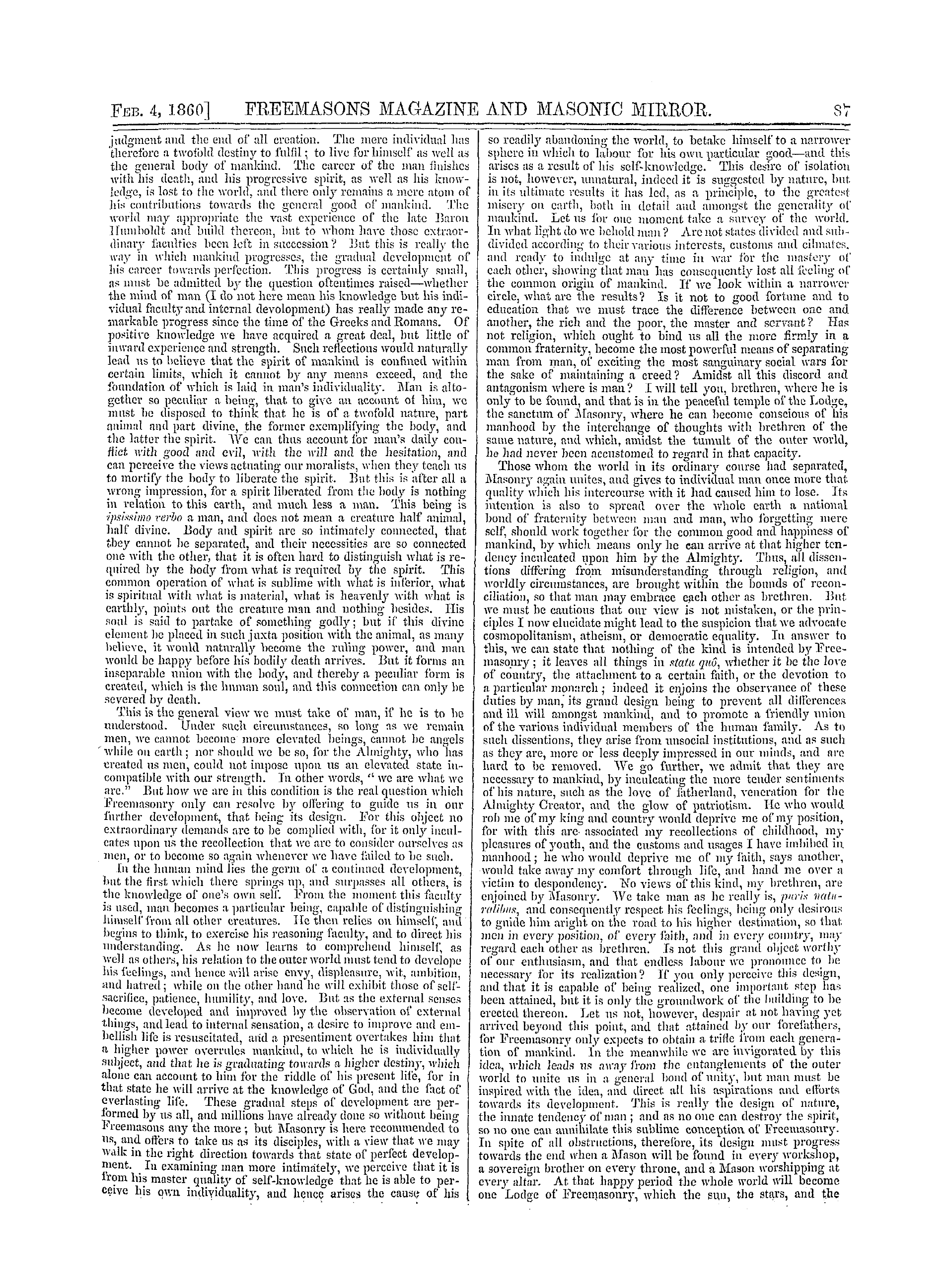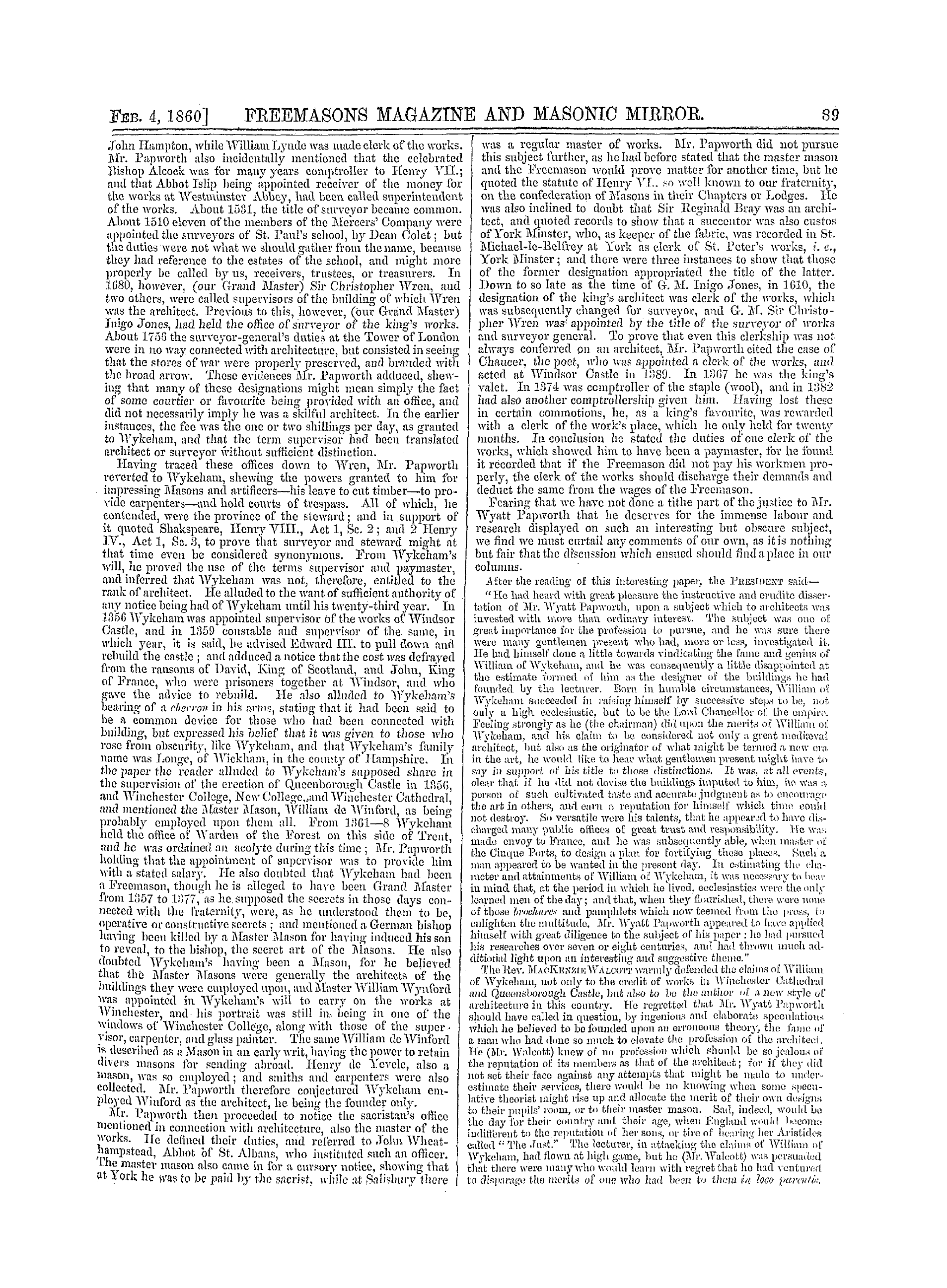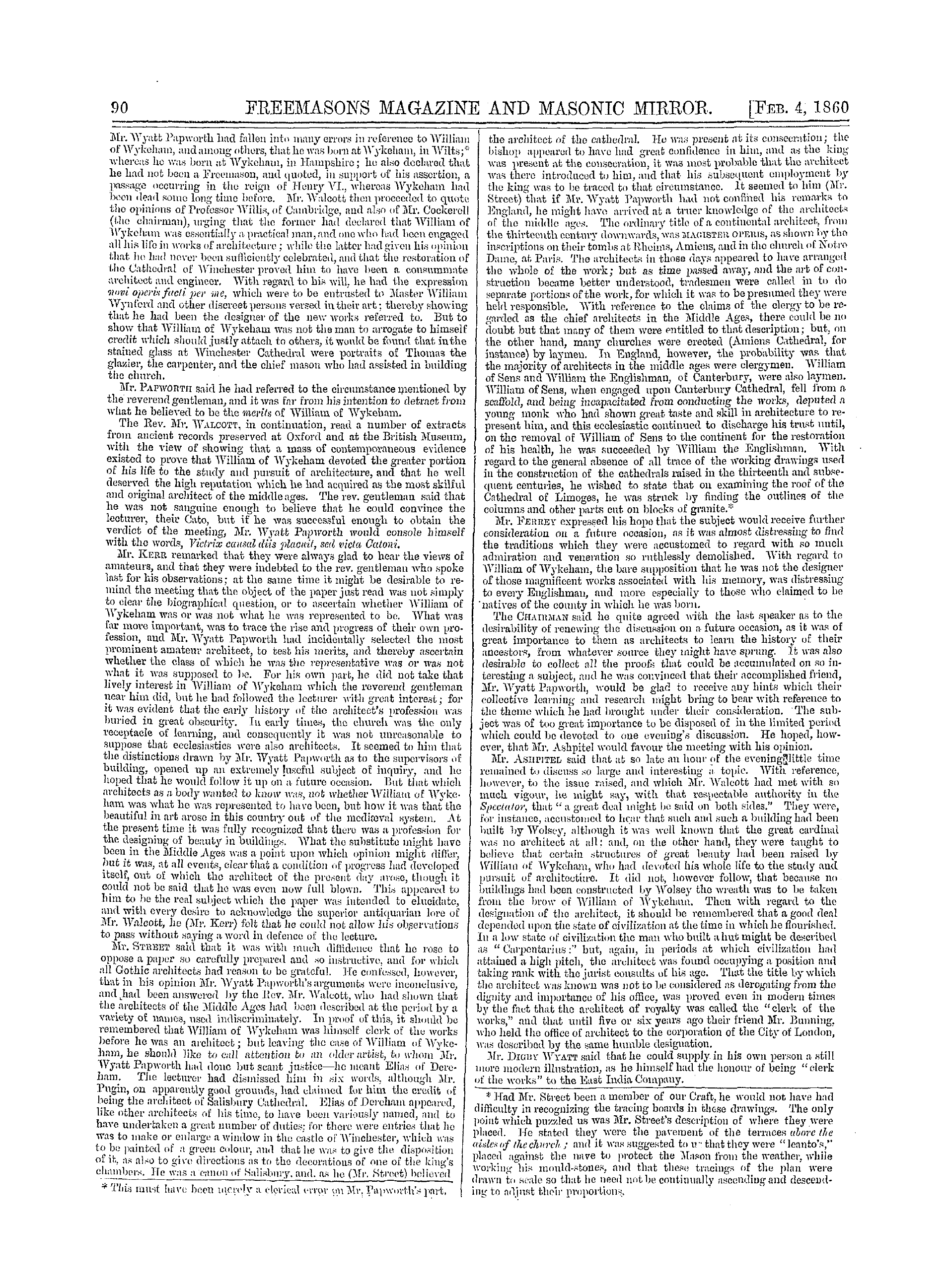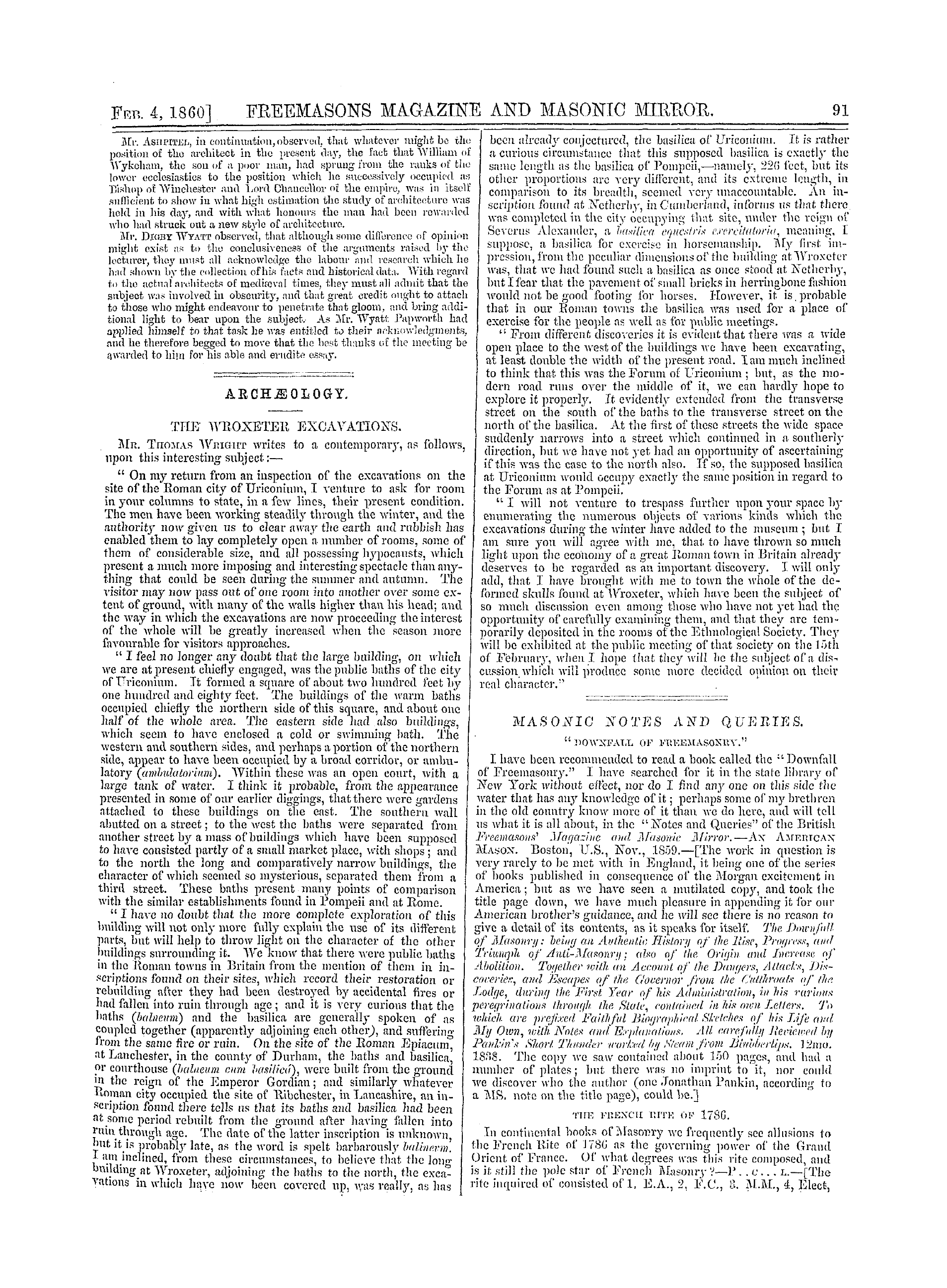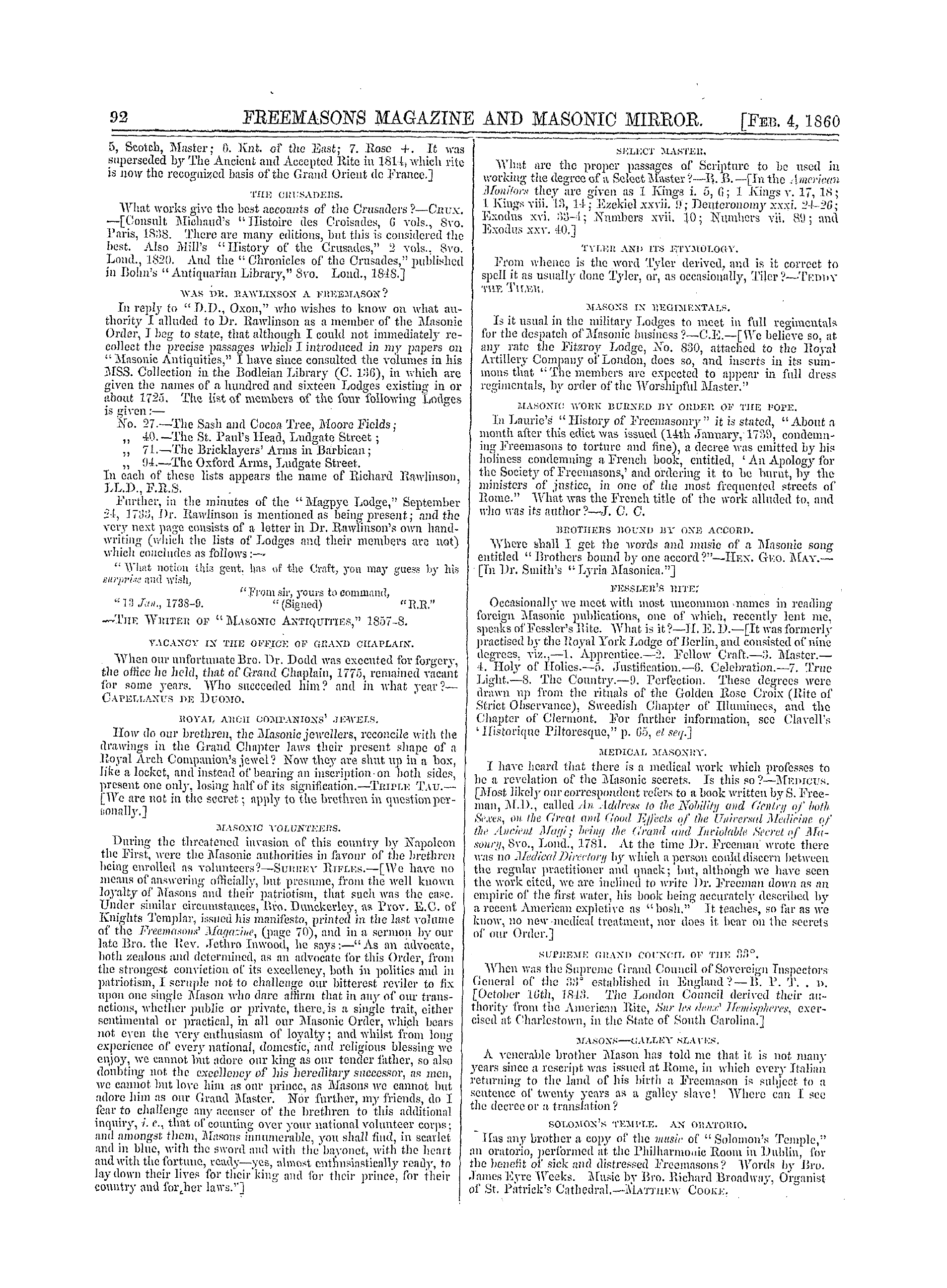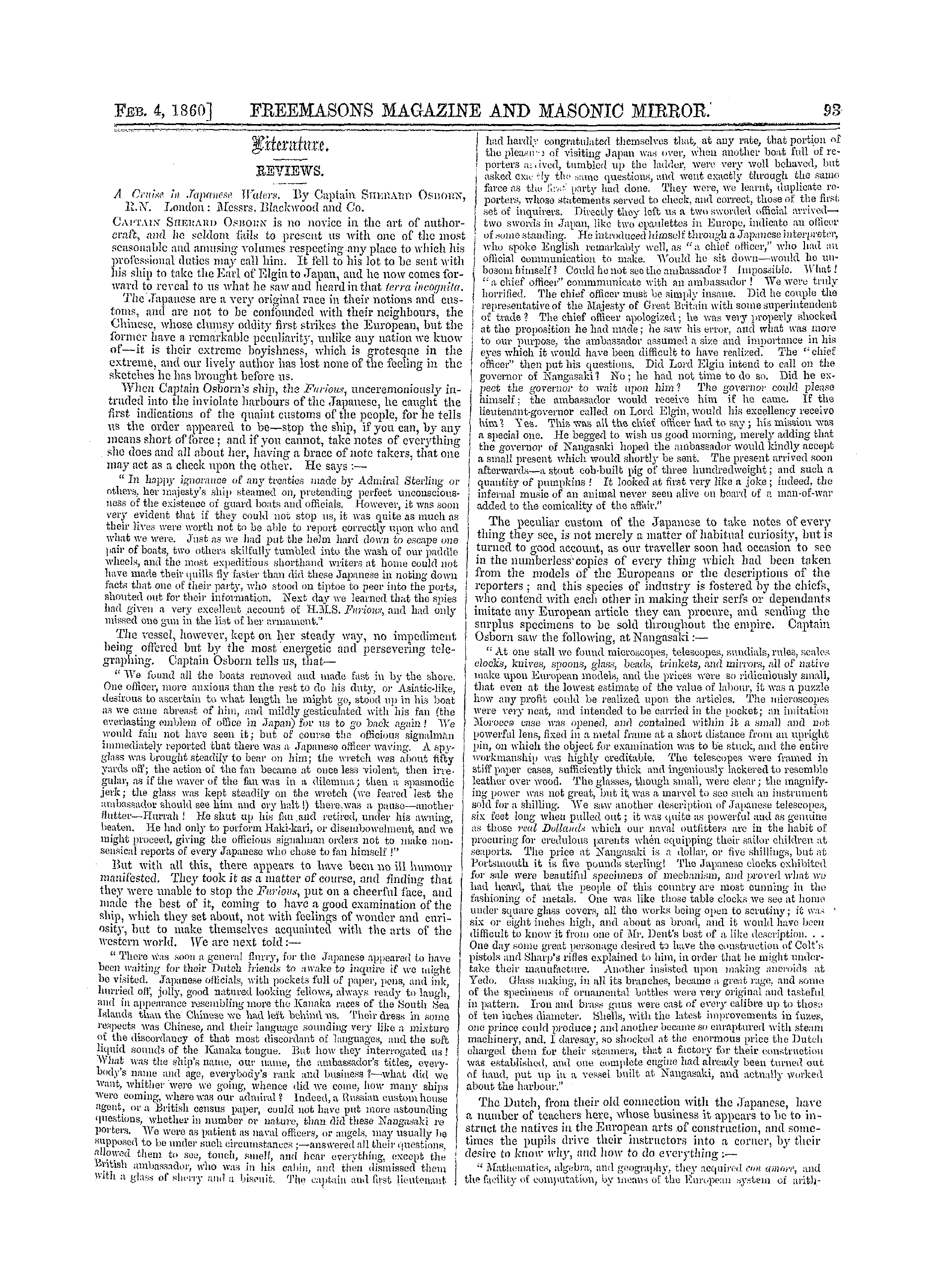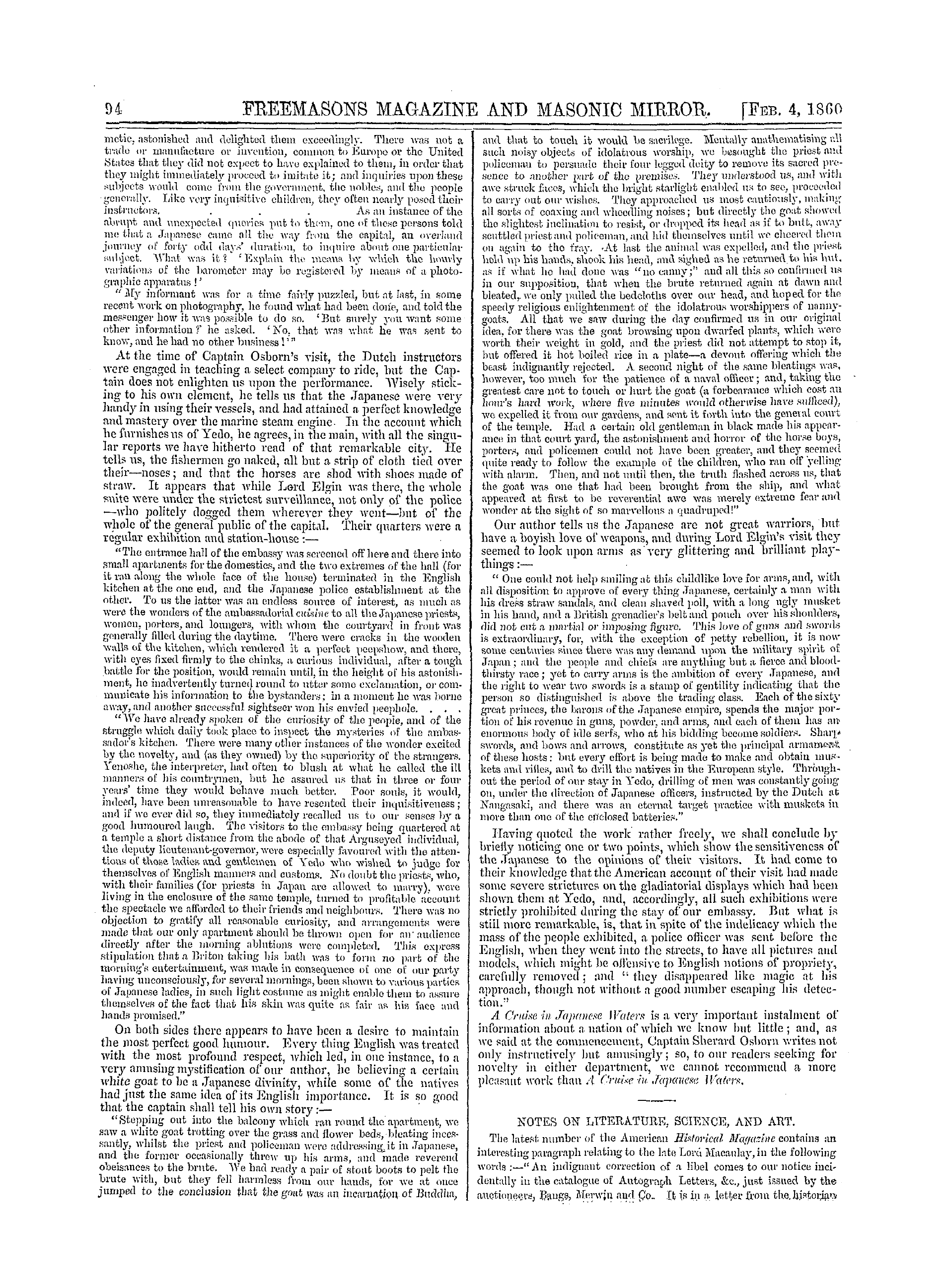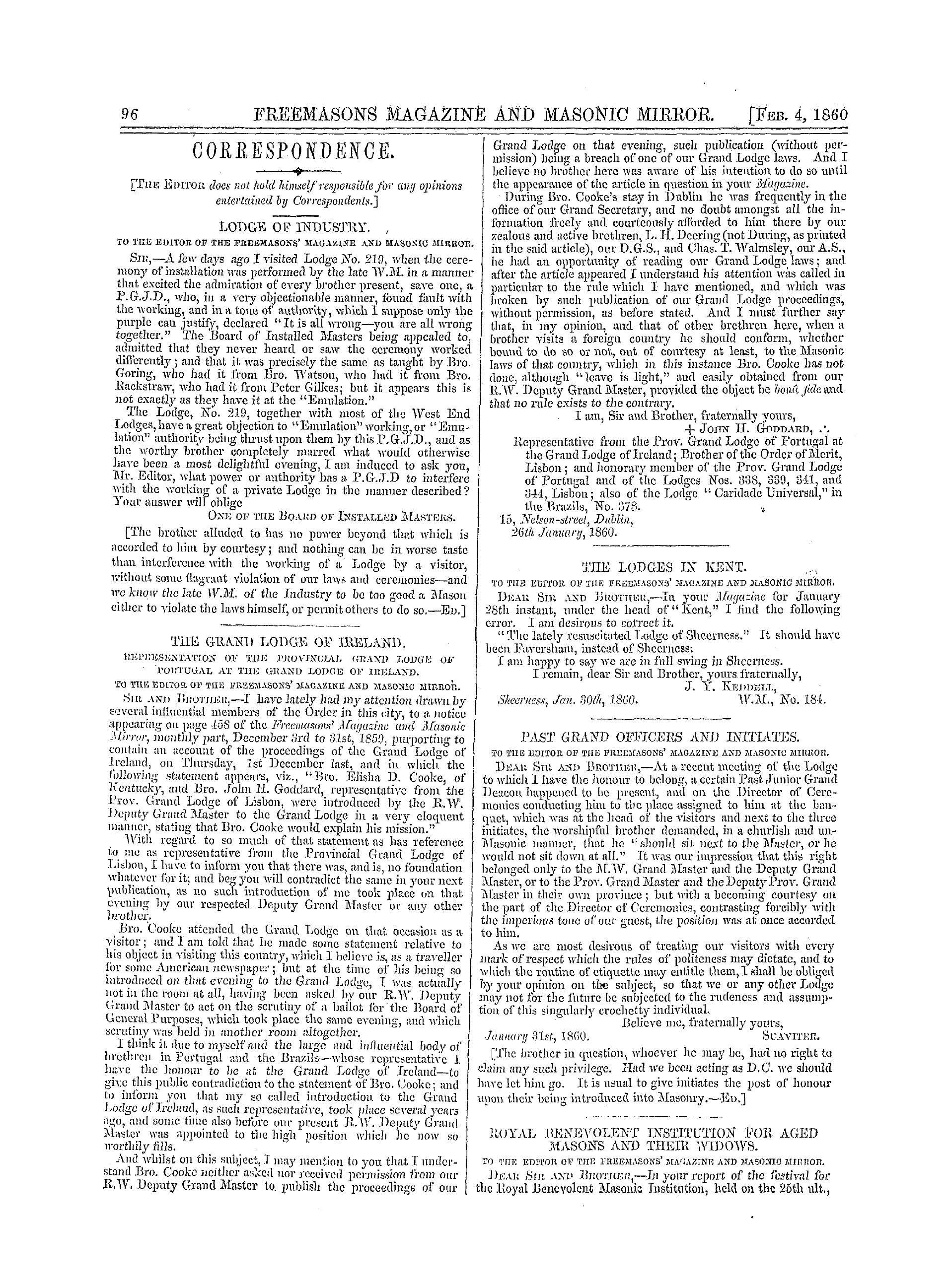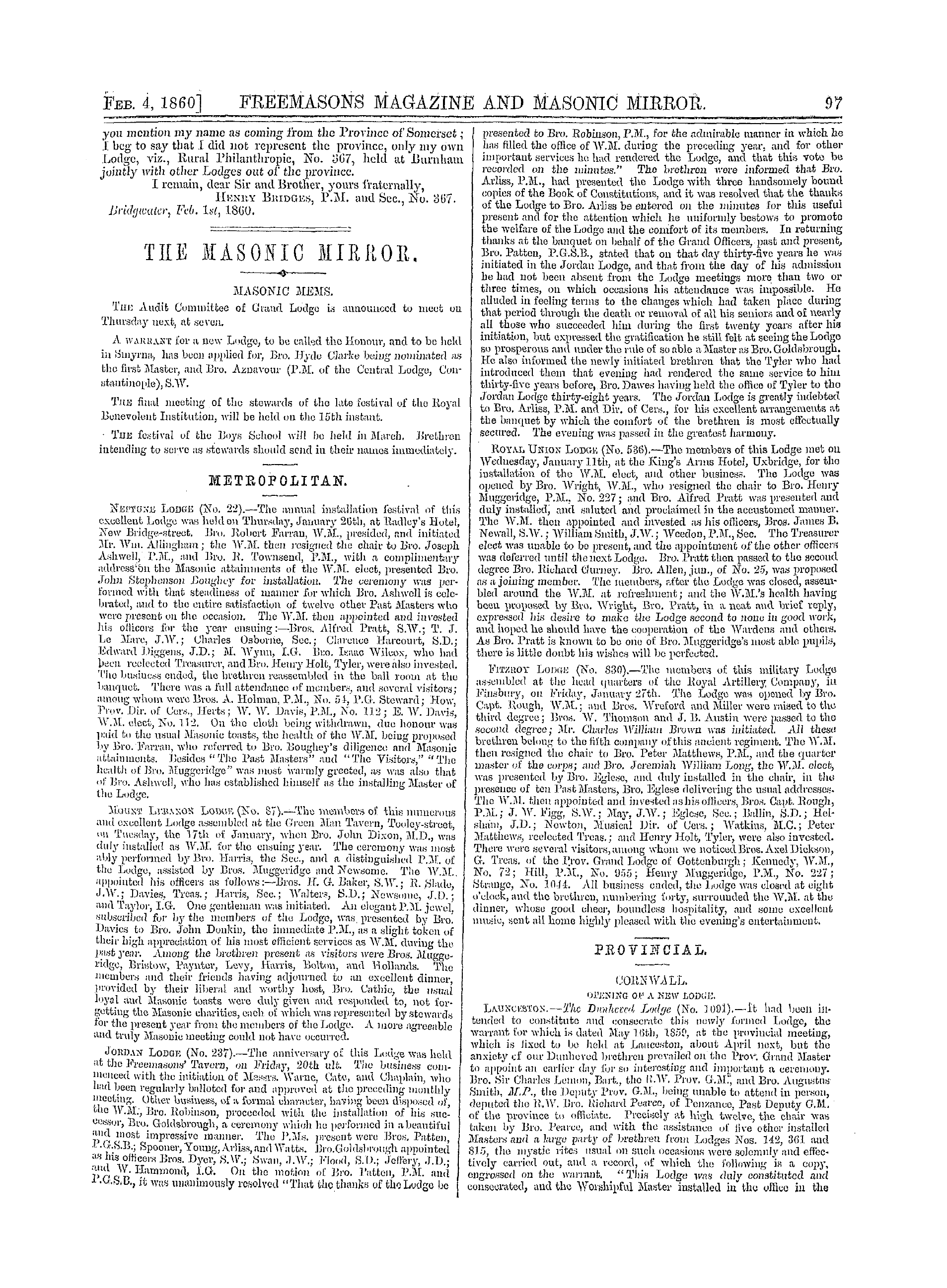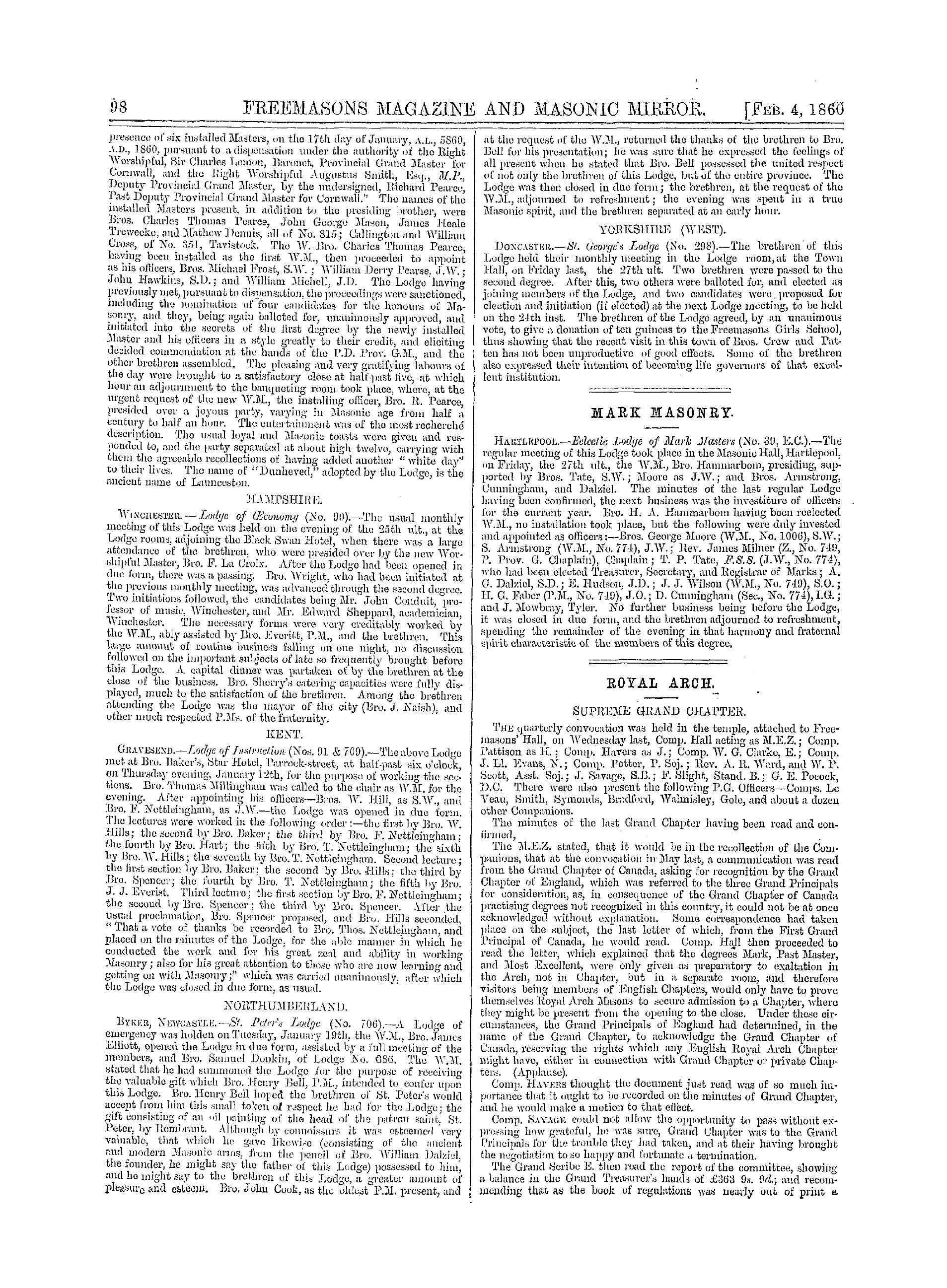-
Articles/Ads
Article ROYAL INSTITUTE OF BRITISH ARCHITECTS. ← Page 3 of 4 Article Untitled Page 1 of 1
Note: This text has been automatically extracted via Optical Character Recognition (OCR) software.
Royal Institute Of British Architects.
ill-. Wyatt PapAvorth had fallen into many errors in reference to AVilliam of AVykeham , and among others , that he Ai-as horn at AVykeham , iu AVilts ;'"' whereas he A-.-as born sit Wykeham , in Hampshire ; he also declared that he had not been a Freemason , and quoted , iu support of his assertion , a passage occurring in the reign of Henry "VI ., whereas AVykeham had been dead sonic long time before . Mr . AA ' alcoti then proceeded to quote the opinions of Professor AVillis , of Cambridge , and also of Mr . Cockerel ! ( tho chairman ) , urging that the former hail declared that "William of
Wykeham ivas essentially a practical man , and one Avho had been engaged all his lifo in works of architecture ; while tho latter had given his opinion that he had never been sufficiently celebrated , and that the restoration of the Cathedral of AVinohester proved him to have been a consummate architect and engineer . AA'ith regard to his will , he had the expression iinvi operkfacli per -me , which ivere to be entrusted to Master AVilliam Wyn ford and other discreet persons versed iu their art ; thereby showing that he had been the designer of the neiv works referred to . But to
show that AA'illiam of AVykeham was not the man to arrogate to himself credit ivlu ' ch should justly attach to others , it ivould be found that in the stained glass at Winchester Cathedral Avere portraits of Thomas the glazier , the carpenter , and the chief mason who had assisted in building the church .
Mr . PAPAA'ORTU said he had referred to the circumstance mentioned by the reverend gentleman , and it was far from his intention to detract from what he believed to he the menVg of AVilliam of AVykeham . The Eev . Mr . AVALCOTT , in continuation , read a number of extracts from ancient records preserved at Oxford aud at the British Museum , with the vieiv of showing that a mass of contemporaneous evidence existed to prove that AVilliam of AV ykeham devoted the greater portion of his life to the study and pursuit of architecture , and that he well
deserved the high reputation which he had acquired as the most skilful and original architect of the middle ages . The rev . gentleman said that he was not sanguine enough to believe that he could coni-ince the lecturer , their Cato , hut if he ivas successful enough to obtain the verdict of the meeting , Mr . AVyatt Papworth would console himself AA'ith the words , Victrix causal diis placuit , sed , vieta Catoni . Mr . KERR remarked that they were always glad to hear the vieivs of amateursand that they were indebted to the rev . gentleman who spoke
, last for his observations ; at the same time it might be desirable to remind the meeting that the object of the paper just read was not simply to clear the biographical question , or to ascertain whether AVilliam of AVykeham ivas or ivas not AA'hat he was represented to be . AVhat AA-as far more important , was to trace the rise and progress of their OAVU profession , aud Mr . AA yatt Papworth had incidentally selected the most prominent amateur architect , to test his merits , and thereby ascertain whether the class of which he ivas the representative ivas or ivas uot
Avhat it AA-as supposed to be . For his own part , he did not take that lively interest in AVilliam of AV ykeham which the reverend gentleman near him did , but he had folloived the lecturer with great interest ; for it was evident that the early history of the architect ' s profession ii-as buried iu great obscurity . Iu early times , the church was tho only receptacle of learning , and consequently it was not unreasonable to suppose that ecclesiastics ivere also architects . It seemed to him that the distinctions drawn b y Sir . AVyatt Papworth as to the supervisors of building , opened np an extremely ( useful subject of inquiry , and he
hoped that he ivould follow it up on ' a future occasion . But that ivliioh architects as a body wanted to know u-.-ts , not whether AVilliam of AVykeham was what he was represented to have boon , but how it was that the beautiful in art arose in this country out of the mediieval system . At the present time it was fully recognized that there was a profession for the designing of beauty in buildings . AVhat the substitute mi ght have been in the Middle Ages was a point upon which opinion might differ , hat it was , at all events , clear that a condition of progress had developed
itself , out of which tho architect of the present day arose , though it could not be said that ho was even noiv full blown . " This appeared to him to be the real subject which the paper AA'as intended to elucidate , and with every desire to acknowledge the superior antiquarian lore of Mr . AValcptt , ho ( Mr . Kerr ) felt that he could not allow his observations to pass Avithout saying a word in defence of the lecture . Mr . STREET said that it ivas with much diffidence that he rose to oppose a paper so carefully prepared aud so instructiveand for which
, all Gothic architects had reason to he grateful . He confessed , however , that in his opinion Mr . AVyatt Papivorth ' s arguments ivere inconclusive , andliad been answered hy the llev . Mr . AValcott , who had shown that the _ architects of the Middle Ages had been described at the period by a variety of names , used indiscriminately . In proof of this , it should be remembered that AVilliam of AVykeham was himself clerk of the Avorks before he was an architect ; but leaving the ease of AVilliam of AVvkcham , he shonld like to call attention to an older artist , to whom " Mr .
AVyatt PapAvorth had done but scant justice—he meant Ellas of Dereham . The lecturer had dismissed him in six words , although Jlr . Pugin , on apparently good grounds , had claimed for him the credit of being the architect of Salisbury Cathedral . Elias of Dereham appeared , like other architects of his time , to liaA-e been variously named , and to have undertaken a great number of duties : for there were entries that he AA'as to make or enlarge a Avindoiv in the eastle oi' 'Winchester , ivhich was to be painted of a green colour , and thafc he ivas to give the disposition of it , as also to give directions as to the decorations of one of the king ' s chambers . He was a canon of Salisbury , and . as be . ( Mr . Street ) believed
Ar01001
the architect of tho cathedral . Ho AIMS present at its consecration ; the bishop appeared to have had great confidence in him , and as the king was present afc the consecration , ifc was most probable that the architect was there introduced to him , and that his subsequent employment by the king Ai-as to be traced to that circumstance , lt seemed to him ( Mr . Street ) that if Mr . Wyatt PapAvorth had not confined his remarks to England , he might have arrived at a truer knoll-ledge of the architects of the middle ages . The ordinary title of a continental architect , from
the thirteenth century doAi-nwards , was MAGISTEII OITJIUS , as shown by tho inscriptions on their tombs afc Rheinis , Amiens , and in the church of Notre Dame , at Paris . The architects in those days appeared to hai-e arranged the whole of the work ; but as time pas ' sed aivay , and the art of construction became better understood , tradesmen were called in to do separate portions ofthe work , for which it was to be presumed they were held responsible . AA'ith reference to the claims of the clergy to be regarded as the chief architects in the Middle Ages , there could be no
doubt but that many of them were entitled to that description ; but , on the other hand , many churches were erected ( Amiens Cathedral , for instance ) by laymen . In England , hoivever , the probability was that the majority of architects in the middle ages were clergymen . AVilliam of Sens and AVilliam the Englishman , of Canterbury , were also laymen . AVilliam of Sens , when engaged upon Canterbury Cathedral , fell from a scaffold , and being incapacitated from conducting the works , deputed a monk who had shown great taste and skill in architecture to
reyoung present him , and this ecclesiastic continued to discharge his trust until , on the removal of AVilliam of Sens to the continent for the restoration of his health , he was succeeded by William the Englishman . AA'ith 1 regard to the general absence of all trace of the AA'orking drawings used in the construction of the cathedrals raised in the thirteenth and subsequent centuries , he wished to state that on examining the roof of the Cathedral of Limoges , he AA'as struck by finding the outlines of the columns and other parts cut on blocks of granite . *
Mr . FJEMIEY expressed his hope that the subject would receive further consideration on a future occasion , as ifc was almost distressing to find the traditions which they were accustomed to regard with so much admiration and veneration so ruthlessly demolished . AA'ith regard to AVilliam of AVykeham , the bare supposition that he was not the designer of those magnificent works associated Avith his memory , was distressing to every Englishman , and more especially to those who claimed to be natives of the county in Avhich he AA-as born .
The CHAIRMAN said he quite agreed ivith the last speaker as to the desirability of rencAving the discussion on a future occasion , as it was of great importance to them as architects to learn the history of their ancestors , from whatever source they might hai-e sprung . It ivas also desirable to collect all the proofs that could he accumulated on so interesting a subject , and he AA-as convinced that their accomplished friend , Mr . AA' yatt Papworth , would be glad to receive any hints ivhich their colleetiA-e learning and research might bring to bear with reference to
the theme AA'hich he had brought under their consideration . The sub-1 jeet was of too great importance to be disposed of in the limited period I AA'hich could be devoted to one evening ' s discussion . He hoped , hoivever , that Mr . Ashpitel would favour the meeting with his opinion . Mr . ASHPITED said that afc so late an hour of the eveningjjlittle time remained to discuss so large and interesting a topic . AVith reference , however , to the issue raised , and ivhich Mr . AValcott had met Avith so much vigour , he might say , with that respectable authority in the
Spectator , that " a great deal might bo said on both sides . " They were , for instance , accustomed to heat- that such and such a building had been built by AVolsey , although ifc was well knoAvn that the great cardinal Avas no architect at all ; and , on the other hand , they were taught to believe thafc certain structures of groat beauty had been raised by-William of AVykeham , who had devoted his Avhole life to the study aud pursuit of architecture . It did not , however follow , that because no buildings had been constructed by AVolsey the wreath was to be taken
from the brow of AVilliam of AVykeham . Then with regard to the designation of the architect , it should be remembered that a good deal depended upon the state of civilization at the timo in which he flourished . In a IOAV state of civilization the man who built a hut might be described as " Carpentarius : '' but , again , in periods at which civilization had attained a high pitch , the architect ivas found occupying a position and taking rank ivith the jurist consults of his age . That the title by which the architect ivas known Avas not to be considered as derogating from the
dignity and importance of his office , was proved even in modern times by the fact that the architect of royalty was called the " clerk of the works , " and that until five or six years ago their friend Mr . Bumiing , who held the office of architect to the corporation of the City of London , AA-as described by the same humble designation . . Air . Drum- AVYATT said that he could supply in his own person a still more modern illustration , as he himself had the honour of being " clerk of the works" to the East India Company .
Note: This text has been automatically extracted via Optical Character Recognition (OCR) software.
Royal Institute Of British Architects.
ill-. Wyatt PapAvorth had fallen into many errors in reference to AVilliam of AVykeham , and among others , that he Ai-as horn at AVykeham , iu AVilts ;'"' whereas he A-.-as born sit Wykeham , in Hampshire ; he also declared that he had not been a Freemason , and quoted , iu support of his assertion , a passage occurring in the reign of Henry "VI ., whereas AVykeham had been dead sonic long time before . Mr . AA ' alcoti then proceeded to quote the opinions of Professor AVillis , of Cambridge , and also of Mr . Cockerel ! ( tho chairman ) , urging that the former hail declared that "William of
Wykeham ivas essentially a practical man , and one Avho had been engaged all his lifo in works of architecture ; while tho latter had given his opinion that he had never been sufficiently celebrated , and that the restoration of the Cathedral of AVinohester proved him to have been a consummate architect and engineer . AA'ith regard to his will , he had the expression iinvi operkfacli per -me , which ivere to be entrusted to Master AVilliam Wyn ford and other discreet persons versed iu their art ; thereby showing that he had been the designer of the neiv works referred to . But to
show that AA'illiam of AVykeham was not the man to arrogate to himself credit ivlu ' ch should justly attach to others , it ivould be found that in the stained glass at Winchester Cathedral Avere portraits of Thomas the glazier , the carpenter , and the chief mason who had assisted in building the church .
Mr . PAPAA'ORTU said he had referred to the circumstance mentioned by the reverend gentleman , and it was far from his intention to detract from what he believed to he the menVg of AVilliam of AVykeham . The Eev . Mr . AVALCOTT , in continuation , read a number of extracts from ancient records preserved at Oxford aud at the British Museum , with the vieiv of showing that a mass of contemporaneous evidence existed to prove that AVilliam of AV ykeham devoted the greater portion of his life to the study and pursuit of architecture , and that he well
deserved the high reputation which he had acquired as the most skilful and original architect of the middle ages . The rev . gentleman said that he was not sanguine enough to believe that he could coni-ince the lecturer , their Cato , hut if he ivas successful enough to obtain the verdict of the meeting , Mr . AVyatt Papworth would console himself AA'ith the words , Victrix causal diis placuit , sed , vieta Catoni . Mr . KERR remarked that they were always glad to hear the vieivs of amateursand that they were indebted to the rev . gentleman who spoke
, last for his observations ; at the same time it might be desirable to remind the meeting that the object of the paper just read was not simply to clear the biographical question , or to ascertain whether AVilliam of AVykeham ivas or ivas not AA'hat he was represented to be . AVhat AA-as far more important , was to trace the rise and progress of their OAVU profession , aud Mr . AA yatt Papworth had incidentally selected the most prominent amateur architect , to test his merits , and thereby ascertain whether the class of which he ivas the representative ivas or ivas uot
Avhat it AA-as supposed to be . For his own part , he did not take that lively interest in AVilliam of AV ykeham which the reverend gentleman near him did , but he had folloived the lecturer with great interest ; for it was evident that the early history of the architect ' s profession ii-as buried iu great obscurity . Iu early times , the church was tho only receptacle of learning , and consequently it was not unreasonable to suppose that ecclesiastics ivere also architects . It seemed to him that the distinctions drawn b y Sir . AVyatt Papworth as to the supervisors of building , opened np an extremely ( useful subject of inquiry , and he
hoped that he ivould follow it up on ' a future occasion . But that ivliioh architects as a body wanted to know u-.-ts , not whether AVilliam of AVykeham was what he was represented to have boon , but how it was that the beautiful in art arose in this country out of the mediieval system . At the present time it was fully recognized that there was a profession for the designing of beauty in buildings . AVhat the substitute mi ght have been in the Middle Ages was a point upon which opinion might differ , hat it was , at all events , clear that a condition of progress had developed
itself , out of which tho architect of the present day arose , though it could not be said that ho was even noiv full blown . " This appeared to him to be the real subject which the paper AA'as intended to elucidate , and with every desire to acknowledge the superior antiquarian lore of Mr . AValcptt , ho ( Mr . Kerr ) felt that he could not allow his observations to pass Avithout saying a word in defence of the lecture . Mr . STREET said that it ivas with much diffidence that he rose to oppose a paper so carefully prepared aud so instructiveand for which
, all Gothic architects had reason to he grateful . He confessed , however , that in his opinion Mr . AVyatt Papivorth ' s arguments ivere inconclusive , andliad been answered hy the llev . Mr . AValcott , who had shown that the _ architects of the Middle Ages had been described at the period by a variety of names , used indiscriminately . In proof of this , it should be remembered that AVilliam of AVykeham was himself clerk of the Avorks before he was an architect ; but leaving the ease of AVilliam of AVvkcham , he shonld like to call attention to an older artist , to whom " Mr .
AVyatt PapAvorth had done but scant justice—he meant Ellas of Dereham . The lecturer had dismissed him in six words , although Jlr . Pugin , on apparently good grounds , had claimed for him the credit of being the architect of Salisbury Cathedral . Elias of Dereham appeared , like other architects of his time , to liaA-e been variously named , and to have undertaken a great number of duties : for there were entries that he AA'as to make or enlarge a Avindoiv in the eastle oi' 'Winchester , ivhich was to be painted of a green colour , and thafc he ivas to give the disposition of it , as also to give directions as to the decorations of one of the king ' s chambers . He was a canon of Salisbury , and . as be . ( Mr . Street ) believed
Ar01001
the architect of tho cathedral . Ho AIMS present at its consecration ; the bishop appeared to have had great confidence in him , and as the king was present afc the consecration , ifc was most probable that the architect was there introduced to him , and that his subsequent employment by the king Ai-as to be traced to that circumstance , lt seemed to him ( Mr . Street ) that if Mr . Wyatt PapAvorth had not confined his remarks to England , he might have arrived at a truer knoll-ledge of the architects of the middle ages . The ordinary title of a continental architect , from
the thirteenth century doAi-nwards , was MAGISTEII OITJIUS , as shown by tho inscriptions on their tombs afc Rheinis , Amiens , and in the church of Notre Dame , at Paris . The architects in those days appeared to hai-e arranged the whole of the work ; but as time pas ' sed aivay , and the art of construction became better understood , tradesmen were called in to do separate portions ofthe work , for which it was to be presumed they were held responsible . AA'ith reference to the claims of the clergy to be regarded as the chief architects in the Middle Ages , there could be no
doubt but that many of them were entitled to that description ; but , on the other hand , many churches were erected ( Amiens Cathedral , for instance ) by laymen . In England , hoivever , the probability was that the majority of architects in the middle ages were clergymen . AVilliam of Sens and AVilliam the Englishman , of Canterbury , were also laymen . AVilliam of Sens , when engaged upon Canterbury Cathedral , fell from a scaffold , and being incapacitated from conducting the works , deputed a monk who had shown great taste and skill in architecture to
reyoung present him , and this ecclesiastic continued to discharge his trust until , on the removal of AVilliam of Sens to the continent for the restoration of his health , he was succeeded by William the Englishman . AA'ith 1 regard to the general absence of all trace of the AA'orking drawings used in the construction of the cathedrals raised in the thirteenth and subsequent centuries , he wished to state that on examining the roof of the Cathedral of Limoges , he AA'as struck by finding the outlines of the columns and other parts cut on blocks of granite . *
Mr . FJEMIEY expressed his hope that the subject would receive further consideration on a future occasion , as ifc was almost distressing to find the traditions which they were accustomed to regard with so much admiration and veneration so ruthlessly demolished . AA'ith regard to AVilliam of AVykeham , the bare supposition that he was not the designer of those magnificent works associated Avith his memory , was distressing to every Englishman , and more especially to those who claimed to be natives of the county in Avhich he AA-as born .
The CHAIRMAN said he quite agreed ivith the last speaker as to the desirability of rencAving the discussion on a future occasion , as it was of great importance to them as architects to learn the history of their ancestors , from whatever source they might hai-e sprung . It ivas also desirable to collect all the proofs that could he accumulated on so interesting a subject , and he AA-as convinced that their accomplished friend , Mr . AA' yatt Papworth , would be glad to receive any hints ivhich their colleetiA-e learning and research might bring to bear with reference to
the theme AA'hich he had brought under their consideration . The sub-1 jeet was of too great importance to be disposed of in the limited period I AA'hich could be devoted to one evening ' s discussion . He hoped , hoivever , that Mr . Ashpitel would favour the meeting with his opinion . Mr . ASHPITED said that afc so late an hour of the eveningjjlittle time remained to discuss so large and interesting a topic . AVith reference , however , to the issue raised , and ivhich Mr . AValcott had met Avith so much vigour , he might say , with that respectable authority in the
Spectator , that " a great deal might bo said on both sides . " They were , for instance , accustomed to heat- that such and such a building had been built by AVolsey , although ifc was well knoAvn that the great cardinal Avas no architect at all ; and , on the other hand , they were taught to believe thafc certain structures of groat beauty had been raised by-William of AVykeham , who had devoted his Avhole life to the study aud pursuit of architecture . It did not , however follow , that because no buildings had been constructed by AVolsey the wreath was to be taken
from the brow of AVilliam of AVykeham . Then with regard to the designation of the architect , it should be remembered that a good deal depended upon the state of civilization at the timo in which he flourished . In a IOAV state of civilization the man who built a hut might be described as " Carpentarius : '' but , again , in periods at which civilization had attained a high pitch , the architect ivas found occupying a position and taking rank ivith the jurist consults of his age . That the title by which the architect ivas known Avas not to be considered as derogating from the
dignity and importance of his office , was proved even in modern times by the fact that the architect of royalty was called the " clerk of the works , " and that until five or six years ago their friend Mr . Bumiing , who held the office of architect to the corporation of the City of London , AA-as described by the same humble designation . . Air . Drum- AVYATT said that he could supply in his own person a still more modern illustration , as he himself had the honour of being " clerk of the works" to the East India Company .
